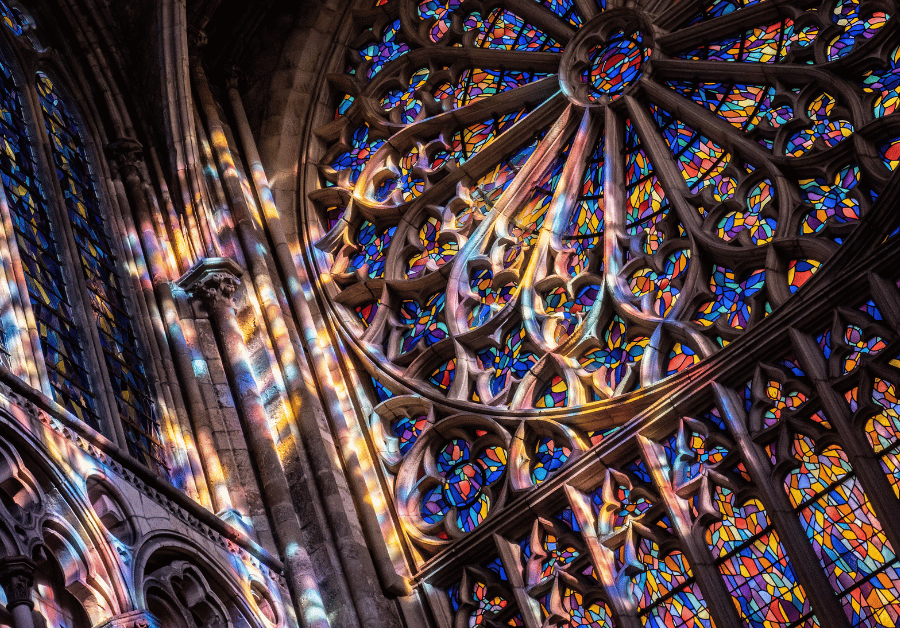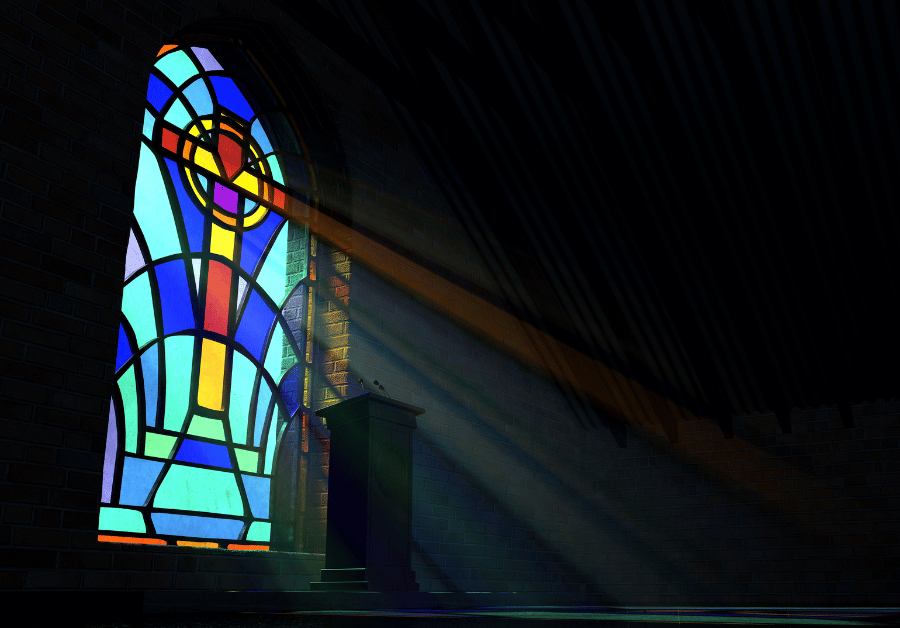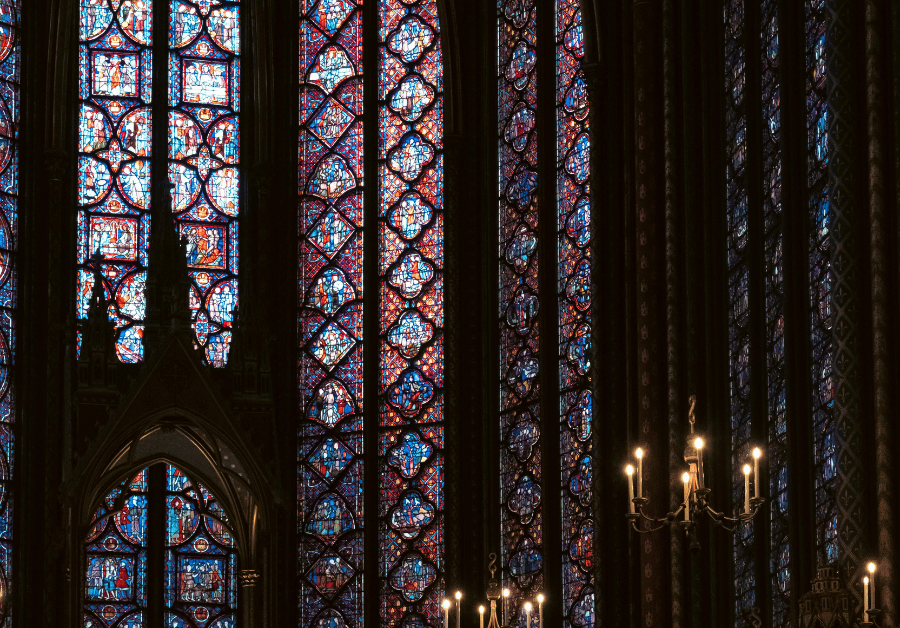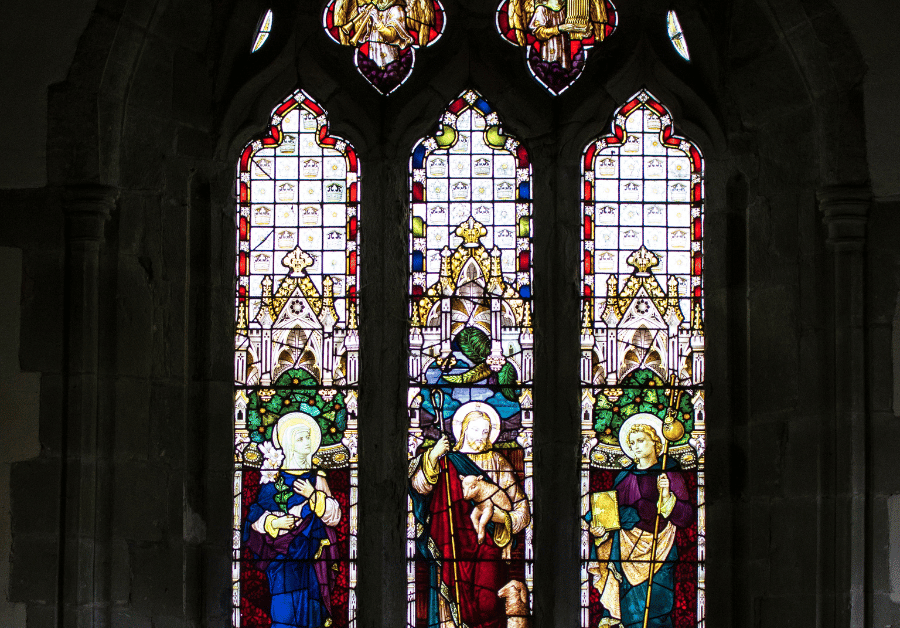Stained Glass Artistry: Australia's Enduring Luminous Legacy
Step into a world where light dances, colours sing, and history whispers through vibrant panes. Stained glass artistry is more than just a craft; it's an intricate dance between light, colour, and narrative, transforming ordinary spaces into extraordinary experiences. In Australia, from the bustling streets of Sydney and Melbourne to the serene landscapes around Perth, Brisbane, Adelaide, and Hobart, this ancient art form continues to captivate, adorn, and inspire.
Have you ever paused to admire the kaleidoscope of colours pouring through a grand church window or been enchanted by a delicate leadlight panel in an old Queenslander? That's the magic of stained glass at work. Whether you're a homeowner dreaming of a custom piece, a business owner seeking unique architectural flair, or simply an admirer of fine art, understanding the depth and beauty of stained glass artistry opens up a world of possibilities.
A Glimpse Through Time: The Rich History of Stained Glass Artistry in Australia
The story of stained glass artistry in Australia is deeply intertwined with the nation's development. While its roots lie in the grand cathedrals of medieval Europe, the art form found a unique expression on Australian shores, brought by migrating architects and glass artists during periods of prosperity and building booms, particularly in churches and public buildings.
Early Foundations: From European Shores to Australian Light
In the late 19th and early 20th centuries, as Australia's cities expanded, so did the demand for decorative arts. Many of the first significant stained glass installations were commissioned for religious institutions. The Anglican Church and Catholic Church, in particular, became prominent patrons, commissioning elaborate stained glass windows that told biblical stories and added profound beauty to their sanctuaries. Think of the stunning east window in many historic churches, often a focal point of their design.
Pioneering studios like Lyon, Cottier & Co. played a crucial role in establishing the craft. Their work, often imported or designed in Australia but fabricated overseas, set a high standard for quality. However, it wasn't long before talented glass artists began to emerge locally, adapting traditional techniques to Australian light and themes.
Notable Australian Stained Glass Artists and Their Legacies
Australia boasts a rich history of incredibly talented stained glass artists. Figures like Christian Waller, active until the craft revival of the 1970s, were leading proponents of Modernism in their work, leaving a significant mark on the nation's art scene. Her works can be found in places like the Castlemaine Art Museum, showcasing her unique contribution to Australian stained glass artistry.
The Australian Dictionary of Biography holds many full record entries for artists who shaped this field, including William Frater, a Scottish-born artist and stained-glass designer whose work spanned decades. Another notable figure was Marinus “Rein” Slagmolen, a Dutch-Australian artist described as one of the top six stained glass artists in Australia in the 1970s. His contemporary, Jean Orval, also a Dutch-Australian artist, exhibited his works widely across the country, further enriching the tapestry of Australian stained glass.
When you explore the history of stained glass in Australia, you'll often encounter references to significant collections, such as those contributed by private collection or documented by media figures like Douglass Baglin. His work, often a full record by Douglass Baglin, captured the beauty of Australian stained glass, and many of his images are preserved by kind permission of the Baglin Estate.
Iconic Locations & Stained Glass Artistry in Australian Cities
- Sydney: The Sydney Town Hall is home to magnificent stained glass windows, including the famous Captain Cook Window (also known as the Cook Window), which depicts Captain Cook's arrival. The Great Hall within the Sydney Town Hall is particularly renowned for its grand glass windows. Other notable locations include St James Anglican Church and the Garrison Church in Millers Point. The University of Sydney also houses impressive examples of historic stained glass, reflecting the significant investment in art during their construction years. You can delve deeper into Sydney's stained glass history via the Dictionary of Sydney.
- Melbourne: Melbourne's architectural heritage is rich with stained glass. Many historic Anglican churches throughout Melbourne feature stunning examples, illustrating the skill of local and international glass artists. The State Library of Victoria's La Trobe Journal has even published surveys like "The Art of Light: a survey of stained glass in Victoria," highlighting the depth of this art form in the state.
- Other Cities: While less documented in historical snippets, cities like Perth, Brisbane, Adelaide, and Hobart also possess hidden gems of stained glass artistry in their churches, public buildings, and historic homes, each contributing to the national collection of this beautiful art.
The Craft Unveiled: What Goes into Stained Glass Artistry?

Behind every luminous panel of stained glass artistry lies a meticulous process, combining artistic vision with technical precision. It’s a craft that demands patience, skill, and an intimate understanding of light and material.
Materials and Techniques
The primary material, of course, is glass itself – often specially formulated for colour and light transmission. The magic happens when pieces of coloured glass are cut to shape and joined together. The two main techniques are:
- Leadlighting: This traditional method uses lead came (H-shaped strips of lead) to hold the individual pieces of glass in place. The lead is soldered at the joints, creating a strong, durable panel. This technique is often seen in classic stained glass windows in churches and older homes.
- Copper Foil (Tiffany Method): Developed by Louis Comfort Tiffany, this technique involves wrapping each piece of glass with copper foil, which is then burnished smooth and soldered together. This allows for more intricate designs, tighter curves, and smaller pieces of glass, making it popular for lampshades, suncatchers, and more detailed residential work.
Beyond these, artists may also employ techniques like glass painting (using special enamels that are fired onto the glass), etching, and sandblasting to add detail and texture. The work can be incredibly complex, transforming raw glass into a vibrant work of art.
Stained Glass Artistry Across Australia's Vibrant Cities
While the historical significance of stained glass artistry is undeniable, its presence in modern Australia is equally compelling. Contemporary glass artists are breathing new life into this ancient craft, creating bespoke pieces that resonate with today's aesthetic.
Sydney: A Hub for Historic and Contemporary Glass Artistry
Sydney's rich history means it's a treasure trove of historic stained glass, from the grandeur of the Sydney Town Hall to the quiet beauty of a St James window. But Sydney is also a vibrant centre for modern stained glass artistry. Many talented glass artist studios can be found from the Northern Beaches to the Inner West, offering custom designs for homes and businesses. Areas like Hunters Hill and Double Bay often feature stunning residential examples, showcasing how stained glass adds unique character to a property. Whether you're in search of a classic restoration or a bold new design, Sydney has a diverse range of professionals.
Melbourne: Where Art and Architecture Meet
Melbourne, with its strong artistic community, is a thriving centre for stained glass artistry. Artists like Poppy Templeton are part of a 'new wave' of stained-glass makers, bringing a modern twist to the ancient art, creating geometric and abstract pieces that challenge traditional perceptions. A studio visit to a Melbourne glass artist can reveal the fascinating process behind these contemporary creations. From grand public installations to private collection pieces, Melbourne's stained glass scene is dynamic and innovative.
Perth, Brisbane, Adelaide, and Hobart: Local Flair and Growing Interest
Beyond the major eastern capitals, stained glass artistry is flourishing across Australia. In Perth, bespoke leadlight panels are popular for enhancing modern home designs. Brisbane's humid climate inspires designs that are both beautiful and durable, often seen in renewed Queenslanders. Adelaide's historic buildings provide a backdrop for restoration projects, while new commissions add contemporary flair. Hobart, with its unique blend of colonial and modern architecture, sees stained glass used to create distinct visual statements, reflecting the city's unique charm. Each city offers a unique context for how this art form is appreciated and integrated into the local environment.
Beyond the Church: Modern Applications of Stained Glass Artistry

While its ecclesiastical origins are well-known, stained glass artistry has transcended its traditional boundaries, finding its place in a myriad of contemporary settings. Today, it's a versatile art form that can enhance any space.
- Residential Homes: Imagine a custom-designed stained glass window transforming your entryway, or a leadlight panel adding privacy and charm to a bathroom. From kitchen cabinet inserts to bedroom feature windows, stained glass windows can elevate the aesthetic of any home. It's a unique way to incorporate art and light, adding significant value and character to real estate.
- Commercial Spaces: Restaurants, cafes, hotels, and boutique retail stores are increasingly using stained glass artistry to create distinctive brand identities and inviting atmospheres. A striking glass design can become a memorable focal point, drawing customers in and enhancing their experience.
- Decorative Art & Sculptures: Stained glass is no longer confined to windows. Artists are creating stunning three-dimensional sculptures, light fixtures, mirrors, and even jewellery. These works showcase the incredible versatility and artistic potential of the medium.
- Public and Community Buildings: Beyond churches, stained glass continues to be commissioned for libraries, schools, hospitals, and community centres, often telling local stories or reflecting the values of the institution.
The 'new wave' of artists, like those mentioned in Melbourne, are pushing the boundaries, creating pieces that are abstract, geometric, and thoroughly modern, proving that stained glass artistry is far from being a relic of the past.
Choosing Your Stained Glass Artist: A Guide for Australian Homeowners and Businesses

Commissioning a piece of stained glass artistry is an investment in beauty and craftsmanship. To ensure a successful outcome, it's crucial to choose the right professional.
What to Look For in a Glass Artist:
- Portfolio & Experience: Review their past work. Does their style align with your vision? Look for a diverse portfolio that demonstrates their skill with various techniques and designs. For historical restoration work, inquire about their experience with specific periods or challenging projects.
- Local Knowledge: A local stained glass artist in Sydney, Melbourne, Perth, Brisbane, Adelaide, or Hobart will understand regional architectural styles, local regulations, and can easily conduct a studio visit or on-site consultation.
- Design Collaboration: A good artist will work closely with you, listening to your ideas and translating them into a feasible and beautiful design. They should provide sketches or digital mock-ups for your approval.
- References & Reviews: Ask for references from previous clients or check online reviews. This provides valuable insight into their professionalism, communication, and quality of work.
- Insurance & Guarantees: Ensure the artist is insured and offers a guarantee on their work. This protects both you and your investment.
The Commissioning Process:
- Initial Consultation: Discuss your ideas, budget, and timeline. The artist will assess the space where the stained glass will be installed.
- Design & Quote: Based on the consultation, the artist will create preliminary designs and provide a detailed quote. This might involve several revisions until you're satisfied.
- Fabrication: Once the design is approved, the artist begins the intricate process of cutting glass, leading or foiling, soldering, and cementing. This is where the true stained glass artistry comes to life.
- Installation: The finished panel is carefully installed, ensuring it is secure and perfectly fitted.
- Care & Maintenance: Your artist should provide advice on how to care for your new stained glass to ensure its longevity. Generally, a gentle clean with mild soap and water is sufficient, avoiding harsh chemicals.
Preserving Our Heritage: The Role of Restoration

Many of Australia's historic stained glass windows are over a hundred years old, and like any art form, they require care. Restoration is a vital part of stained glass artistry, ensuring these irreplaceable works continue to tell their stories for generations to come. Skilled conservators meticulously repair broken panes, re-lead deteriorated sections, and clean decades of grime, bringing the original vibrancy back to life. This work requires not just technical skill but a deep respect for the original artist's intent and the history embedded within the glass.
The Enduring Appeal of Stained Glass: Why It Matters Today
In a world increasingly dominated by mass-produced items, the unique appeal of stained glass artistry lies in its bespoke nature and profound connection to light. Each piece is handmade, a testament to human skill and creativity. It's a sustainable art form, often using materials that last for centuries.
More than just decoration, stained glass windows transform light into an active element of a space, creating ever-changing patterns and colours that evoke emotion and wonder. Whether it's a grand installation in a historic Sydney church, a contemporary feature in a Melbourne home, or a subtle accent in a Perth office, stained glass adds an unparalleled depth of character and beauty that few other art forms can match. It's an investment in art, history, and the unique ambiance of your space.
Ready to Bring the Magic of Stained Glass Artistry to Your Space?
Whether you're looking to restore a cherished family heirloom, commission a breathtaking new piece, or simply explore the possibilities of this luminous art form, finding the right professional is the first step. Don't let the complexity of the process deter you; expert stained glass artists across Australia are ready to turn your vision into a vibrant reality.
At Get 3 Quote, we make it simple to connect with trusted local service providers for all your stained glass needs. Just tell us what you need, receive up to 3 detailed quotes from verified professionals, and choose the best match for your project. Experience the ease of finding reliable professionals, ensuring your stained glass artistry project is handled with expertise and care.
Ready to transform your home or business with exquisite stained glass?
